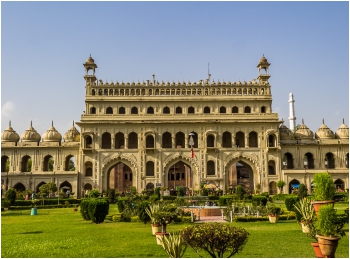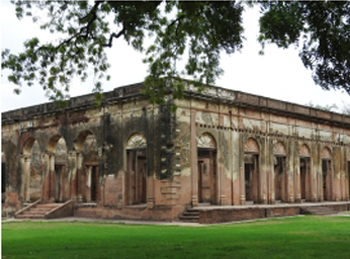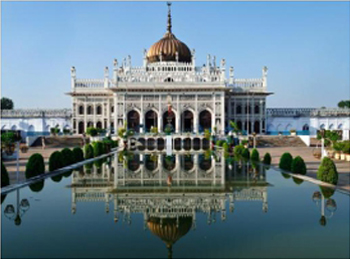About Lucknow
- Home
- About
Lucknow, the capital of Uttar Pradesh, lies in the middle of the Heritage Arc. This bustling city, famed for its Nawabi era finesse and amazing food, is a unique mix of the ancient and the modern. It is home to extraordinary monuments depicting a fascinating blend of ancient, colonial and oriental architecture.
Lucknow was the epicentre of the 1857 War of Independence, and much before that, it was the seat of a line of nawabs who gave the city its unique identity.
Literature, cuisine, performing arts and tehzeeb put Lucknow a cut above the rest – and the world acknowledges it.
Among the magnicent monuments are Imambara, Rumi Darwaza, Kaiserbagh Heritage Zone, Residency, Dilkusha and Shaheed Smarak etc.
Chikan embroidery and zardozi have made Lucknow a brand in global fashion.
Kebabs and biryani are the two lip-smacking delicacies that beckon visitors again and again.
Other tourist attractions include Dr. Ram Manohar Lohia Park, Janeshwar Mishra Park, Ambedkar Memorial Park, Gomti River Front, Nawab Wazib Ali Shah Zoological Garden and Ganga Aquarium etc.
Weather : Temperatures are forecasted ranging from 25 C -15 C. Be sure to bring woolens. This is one of the best time to visit Lucknow
Bara Imambara
Bara Imambara is an imambara complex in Lucknow, India, built by Asaf-ud-Daula, Nawab of Awadh, in 1784. It is also called the Asafi Imambara. Bara means big, and an imambara is a shrine built by Shia Muslims for the purpose of Azadari. The Bara Imambara is among the grandest buildings of Lucknow.
The complex also includes the large Asfi mosque, the bhul-bhulaiya (the labyrinth), and bowli, a step well with running water. Two imposing gateways lead to the main hall. It is said that there are 1024 ways to reach the terrace but only one to come back. It is an accidental architecture.

Rumi Darwaza
Rumi Darwaza is an imposing gateway which was built under the patronage of Nawab Asaf-Ud-daula in 1784. It is an example of Awadhi architecture. It stands sixty feet tall, and was modeled (1784) after the Sublime Porte (Bab-iHümayun) in Istanbul.
It used to mark the entrance to Old Lucknow City, but as the City of Nawabs grew and expanded,it was later used as an entrance to a palace which was later demolished by the British insurgents.

The Residency
The Residency, also called as the British Residency and Residency Complex, is a group of several buildings in a common precinct in the city of Lucknow. It served as the residence for the British Resident General who was a representative in the court of the Nawab. The Residency is located in the heart of the city, in the vicinity of other monuments like Shaheed Smarak, Tehri Kothi and High Court Building.
It was constructed during the rule of Nawab Saadat Ali Khan II, who was the fifth Nawab of the province of Awadh (British spelling Oudh). Construction took place between 1780 and 1800 AD. Between 1 July 1857 and 17 November 1857 the Residency was subject to the Siege of Lucknow, part of the Indian Rebellion of 1857. The Residency now exists as ruins.
